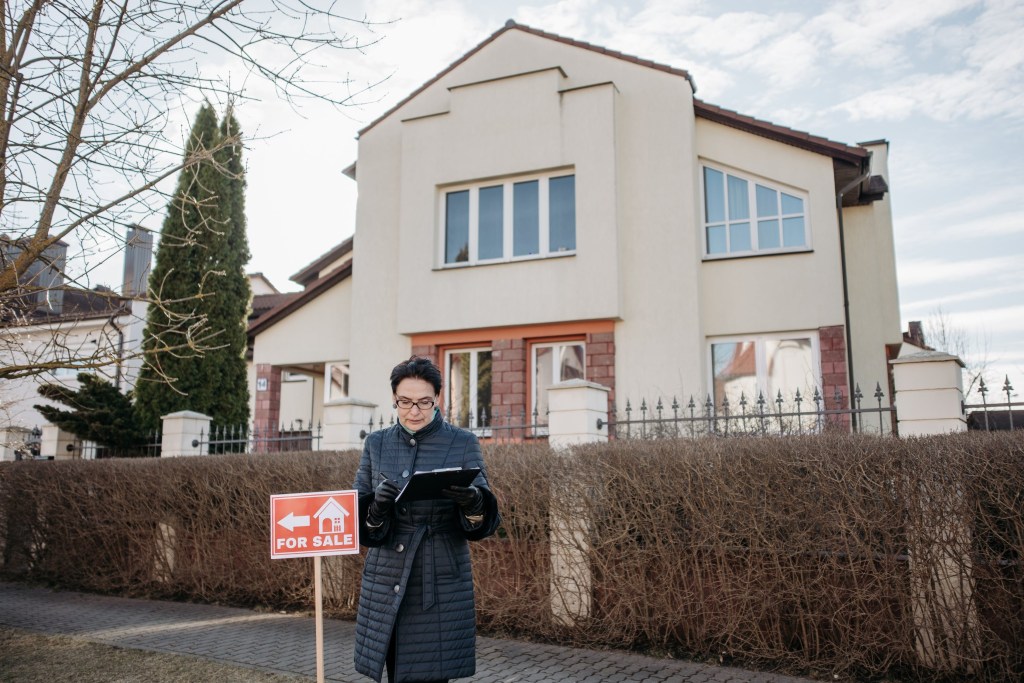Moody’s Analytics released its forecast detailing the current state of the housing market decline. The company now predicts that U.S. home prices will likely fall 10% between the peak-to-trough ratio, which could greatly affect anyone looking to buy or sell a home in the next year or so. Here’s what you need to know.

What has changed as the market begins to cool
Prices soared last year as the housing market adjusted to higher interest rates and inflation. And shortly after, we entered a period of downturn, as prices began to cool. During this period, “The slump subtracted a whopping 1.37 percentage points from GDP, the most since the final three months of 2007 and the start of the Great Recession,” said Fortune. On top of that, Fortune noted that “the average 30-year mortgage rate topped 7% […] for the first time since 2002.”
In October, the average 30-year fixed mortgage rate sat at 7.08%. According to Fortune, “Prior to October, the U.S. had not seen a 7-handle mortgage rate since 2002.”
This raises concerns for many buyers looking to move, refinance, or purchase a home.

Is it the right time to buy or sell?
While many of Moody’s predictions focus on the market at a national level, the data presented on a regional basis from Moody’s housing market forecast highlights how the home price correction will vary dramatically. In total, Moody’s analyzed 322 regional housing markets. “Of those,” stated Fortune, “the firm predicts 100% will see a peak-to-trough home price decline.”
Furthermore, Moody’s Analytics expects “196 markets to see a home price decline greater than 10%,” said Fortune. The price corrections differ quite drastically, depending on the region. This places more emphasis on buyers and sellers being aware of their local fluctuations rather than on the national average alone.
Mark Zandi, the chief economist at Moody’s Analytics, spoke to Fortune about the forecast. “While Zandi expects the housing activity decline to bottom out in the coming months,” said Fortune, “the home price correction — which started this summer — could take years to play out.”
Zandi elaborates, saying, “Sellers are willing to sell. They realize they’re not getting ‘the price I could have gotten a few months ago, but it’s still much higher than I could’ve gotten three years ago.’ So, they feel like they’re doing OK. Even with these price declines, they’re still up a lot from where they bought the home originally.”
Simply put: Home prices rose high and fast months ago, but they haven’t cooled too dramatically — yet. For sellers, this can still be a prime time to put their homes up for sale if they want to take advantage of the higher property values.
Still, the time to buy is not yet at its ideal. “It’s all about affordability,” Zandi told Fortune. “First-time buyers are locked out of the market. They simply can’t afford mortgage payments. Trade-up buyers won’t sell and buy because it doesn’t make any economic sense.” So if you’re a first-time buyer or someone looking to trade up, it could be better to wait it out.
Moody’s Analytics forecast was built on the assumption the U.S. won’t slip into a recession. If the unemployment rate were to go up above 6% and a recession were to manifest, Zandi predicts home price declines would be much greater than his firm currently forecasts.
For now, when it comes to buying or selling your home, it’s best to keep an eye on the data and make decisions based on your personal needs and regional changes.



